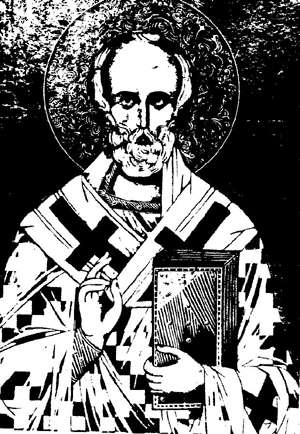
Appendix: THE ANCIENT LITURGY OF JERUSALEM

The “Rite of Jerusalem” is the oldest recorded Liturgy in Christendom. It became famous as the pattern and the starting point for the development of various liturgical rites, especially in the east.
It is originally the local liturgy of Jerusalem, and is none other than the celebrated liturgy of St. James, first bishop of Jerusalem, and “brother of the Lord.”
Historical evidence of its origins abound, and are to be found even within the text itself. For instance, a clear allusion to the holy places of Jerusalem is found after the Epiclesis: “We offer to You, O Lord, for Your holy places which You glorified by the divine appearance of Your Christ and by the coming of Your Holy Spirit, especially for holy and glorious Sion, mother of all Churches.” (Sion, in early Christian language, always referred to the local Church of Jerusalem).
We have further evidence in the catechetical discourses of St. Cyril of Jerusalem, held about the year 348 in the Church of the Holy Sepulchre. It is obvious that they describe the liturgy as known to his hearers there; and it is further evident that Cyril's liturgy is the one we now know as that of St. James.
The liturgy attributed to James spread throughout the Jerusalem patriarchate. [It must be remem-bered that, until the Council of Ephesus in 431, Jerusalem be-longed to the Patriarchate of Antioch.] In this way, the liturgy of St. James made its way to Antioch, and there displaced the rite of the Apostolic Constitutions.
Adopted unchanged at Antioch (the local allusion to “holy and glorious Sion” was left unaltered), it imposed itself with new authority as the liturgy of the patriarchal Church.
The Orthodox used it in Greek until the twelfth century, when its daughter-rite of Constantinople (being a development and off-shoot of the rite of St. James) replaced it. At present the ancient Rite of Jerusalem is used, in Syriac, by the Jacobites and Uniate Syrians, also in a modified form in Syriac by the Maronites. The Greek version has been restored among the faithful of Jerusalem for one day in the year -- 31 December, feast of The Divine Liturgy of St James.
Its value for today, besides its historicity, lies in the opportunity it gives the modern Christian to drink from, and to be formed by, this original font of liturgical piety – one that was to inspire, to one extent or another, all successive liturgies.
| Back |